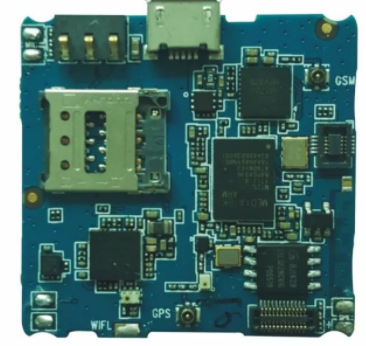Loctite smt solder paste
Applying solder paste is a key process of the SMT process, and metal stencil printing is currently the most commonly used method. Printing solder paste is a key process to ensure the quality of SMT. According to statistics, on the premise that PCB design specifications, components and printed boards are guaranteed, about 60% to 70% of quality problems occur in the printing process.
PCB sinking copper production line PCB quality inspection brand components
The requirements for printing solder paste are as follows:
1. The amount of solder paste applied should be uniform and consistent, the solder paste pattern should be clear, and adjacent patterns should not be glued, and the solder paste pattern should be consistent with the pad pattern and cannot be misaligned.
2. Under normal circumstances, the amount of solder paste per unit area on the pad should be about 0.8mg/mm2, and for narrow-pitch components, it should be 0.5mg/mm2.
3. After the solder paste is printed, there should be no serious collapse, the edges should be neat, and the surface of the substrate should not be contaminated by the solder paste.
Solder paste reflow profile

The physical and chemical properties and process properties of solder paste directly affect the quality of SMT soldering.
1. The choice of solder paste
There are many types and specifications of solder paste, and even the same manufacturer, there are differences in alloy composition, particle size, viscosity, etc. How to choose the solder paste suitable for your product has a great impact on product quality and cost. Nuode Electronics Co., Ltd. currently selects Loctite lead-free solder paste. For this solder paste, we have done process experiments and tested the printability, mold release, thixotropy, adhesion, wettability and The solder joint defects, residues, etc. have been analyzed. This solder paste is currently a relatively mature solder paste in terms of technology, ensuring that PCBA quality control is in place.
2. Correct use and storage of solder paste
Solder paste is a thixotropic fluid. The printing performance of the solder paste, the quality of the solder paste pattern and the viscosity and thixotropy of the solder paste have a great relationship. The viscosity of the solder paste is not only related to the mass percentage content of the alloy, the particle size of the alloy powder, and the shape of the particles. In addition, it is also related to temperature. Changes in ambient temperature will cause fluctuations in viscosity. Therefore, it is best to control the ambient temperature at 23 degree Celsius±3 degree Celsius. Since most solder paste printing is currently performed in the air, the ambient humidity will also Influencing the quality of solder paste, the relative humidity is generally required to be controlled at RH45%~70%. In addition, the printing solder paste workshop should be kept clean, dust-free, and non-corrosive gas. At present, the assembly density is getting higher and higher, and the printing difficulty is getting higher and higher. The solder paste must be used and stored correctly. The main requirements are as follows:
1) Must be stored at 2~10 degree Celsius.
2) It is required to take out the solder paste from the refrigerator one day before use (at least 4 hours in advance), and open the container lid after the solder paste reaches room temperature to prevent condensation.
3) Before use, use a stainless steel mixing knife or automatic mixer to mix the solder paste evenly. When manually mixing, it should be stirred in one direction. The machine or manual mixing time is 3~5min
4) After adding solder paste, the container lid should be closed.
5) Recycled solder paste cannot be used for no-clean solder paste. If the printing interval exceeds 1 hour, the solder paste must be wiped off the template, and the solder paste should be recycled to the container used on the day.
6) Reflow soldering within 4 hours after printing.
7) When repairing the board with no-clean solder paste, if no flux is used, the solder joints should not be scrubbed with alcohol, but if flux is used when repairing the board, the residual flux outside the solder joints that has not been heated must be wiped off at any time, because there is no The heated flux is corrosive.
8) Products that need to be cleaned should be cleaned within the same day after reflow soldering.
9) When printing solder paste and performing patch operations, it is required to hold the edge of the PCB or wear gloves to prevent contamination of the PCB.
3. Inspection
Since printing solder paste is a key process to ensure the quality of SMT assembly, the quality of printed solder paste must be strictly controlled. The inspection methods mainly include visual inspection and SPI inspection. For visual inspection, use 2~5 times magnifying glass or 3.5~20 with microscope inspection, and use SPI (Solder Paste Inspection Machine) for narrow spacing. Inspection standards are implemented in accordance with IPC standards.